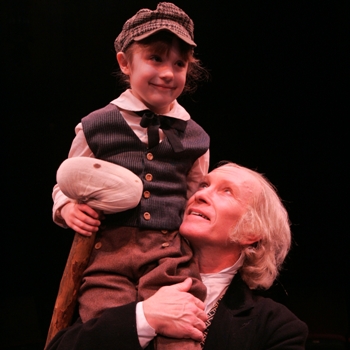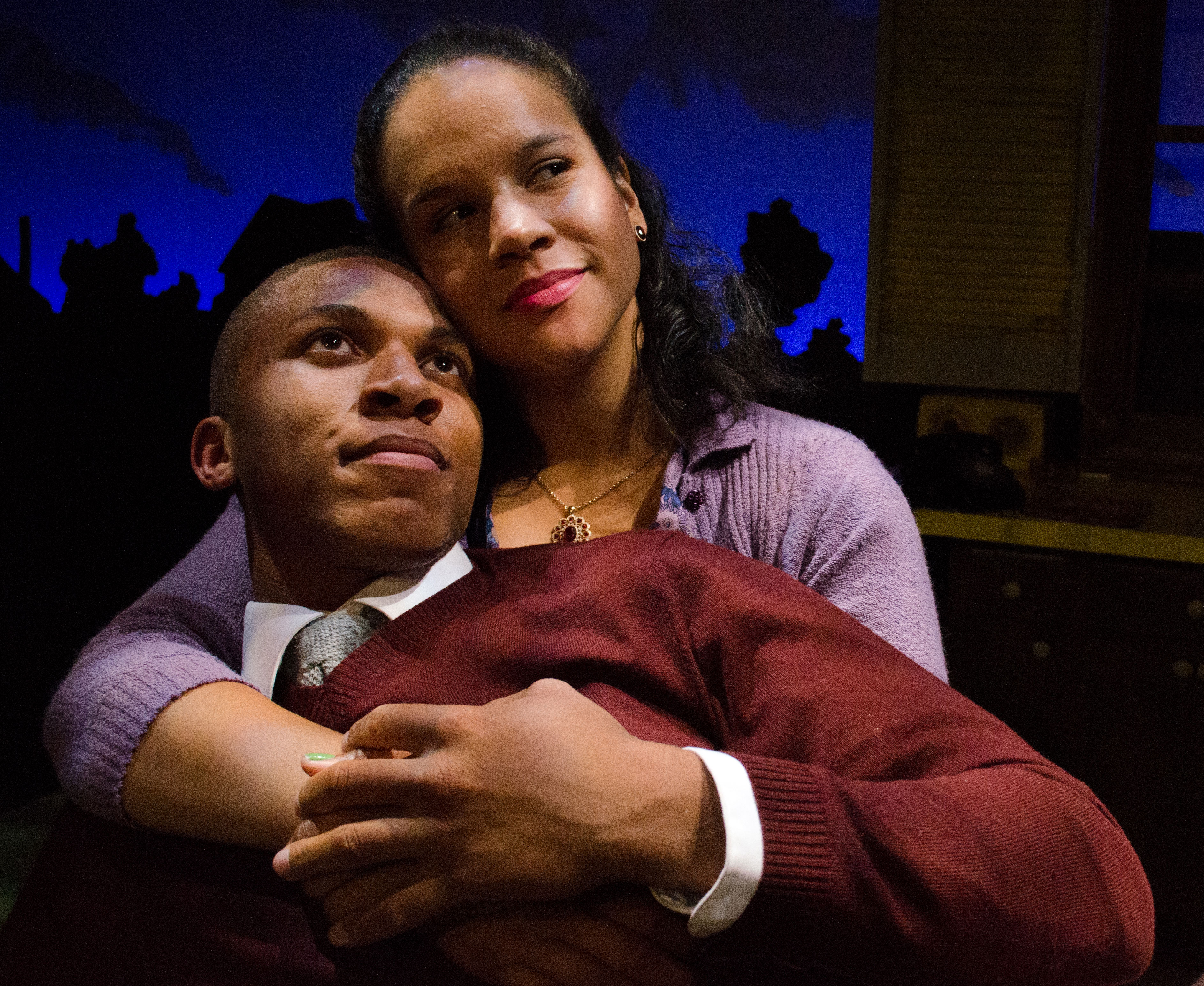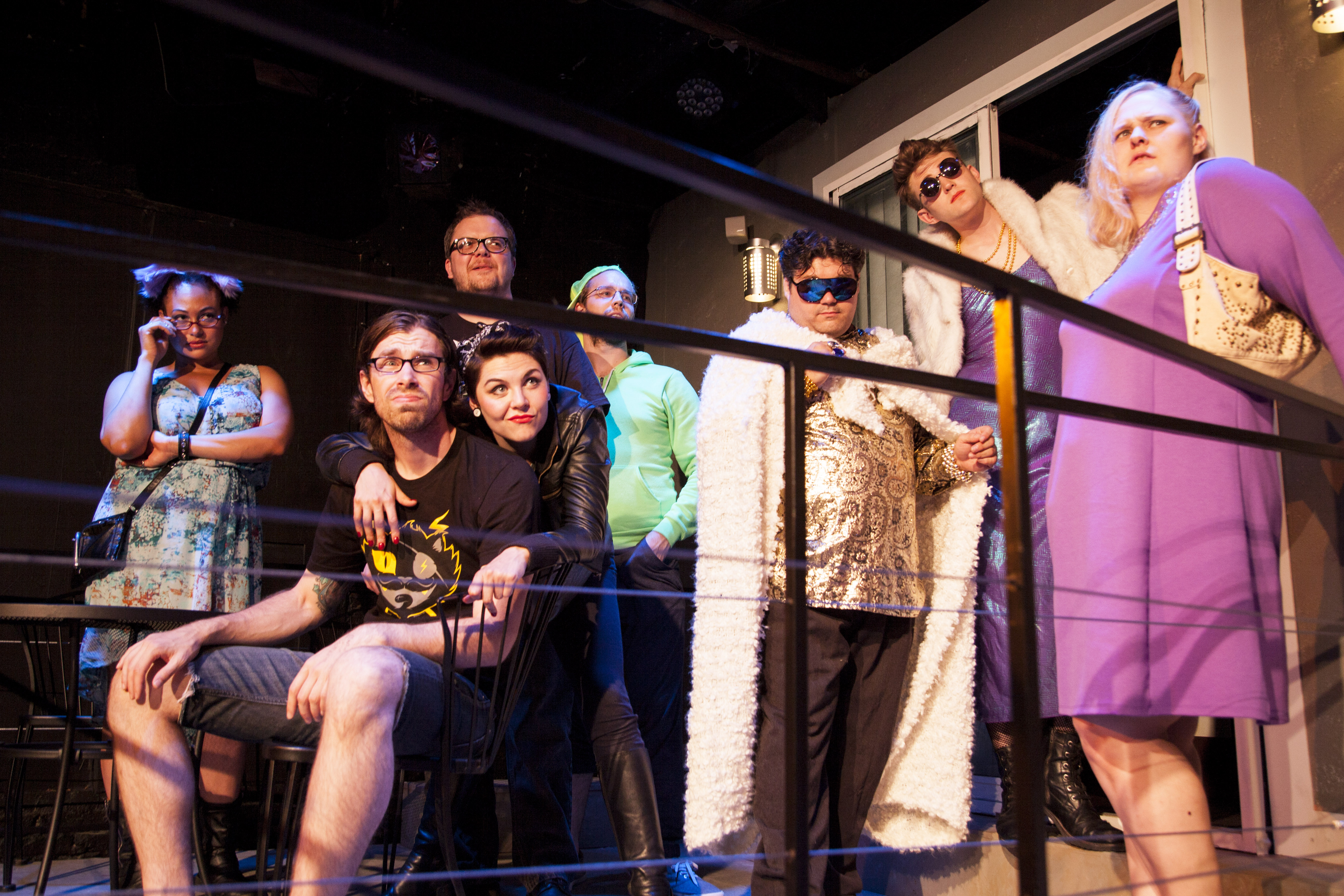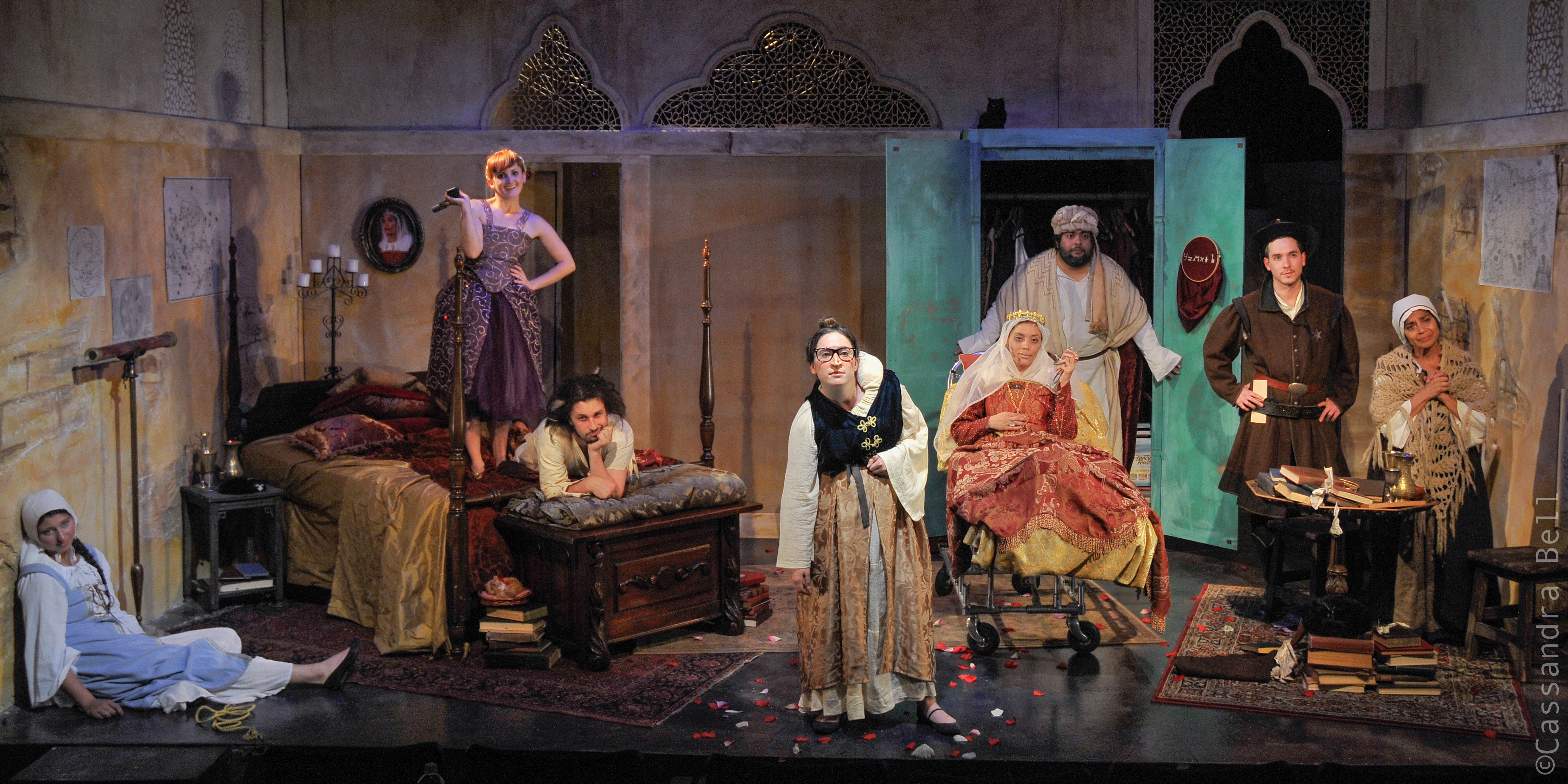A Christmas Carol has been turned into a musical, performed on ice, animated with Scrooge McDuck and Mickey Mouse as the leads, told on recordings, broadcast as a radio play, and mangled in numerous Hollywood knockoffs (the latest an eye-popping Disney/IMAX amazement starring Jim Carrey). And why not? Dickens’ tale is a sturdy vehicle, and like every really great myth, only grows in stature with each retelling. ACT has mounted the show for years.
The lure that brings people back, and the reason ACT should have its houses full until this sterling version finishes its run, is that everyone understands that A Christmas Carol isn’t about Christmas per se. It’s not about ghosts or greed or even Tiny Tim blessing us, every one. It’s about me and you, and the choices that led us to where we are. It’s a confectioner’s delight shot through with regret, repentance, and redemption.
Early in the play, Scrooge’s late business partner (Roy Stanton) materializes as an apparition to warn the old miser that their spirits are bound by the chains of avarice they forged in life. Unlike in the film, the reference onstage is more about typical human failings and much less about specters who can scare the stuffingout of an old man.
Greg Falls, who adapted his text from Dickens’ novella, is relentless in pursuit of his point—that we could all use an out clause in our Faustian bargains before it’s too late. And while the familiars (corporeal and otherwise) come and go, they all build a case for the ways we can stumble from youthful optimism and innocent missteps into fearful, clutching wretches who see anyone else’s gain as our own loss.
This is the first production in more than a decade to feature ACT artistic director Kurt Beattie as Ebenezer Scrooge on alternating nights. Beattie takes his Scrooge from rapacity to giddy transcendence, and it’s one hell of a bravura performance. For anyone who says, “But I’ve seen A Christmas Carol a hundred times before,” I’d say, “You’ve seen buildings before, too. But how many of them were designed by a master?”
There are some delicious moments of stagecraft in light (by Michael Wellborn), sound (Brendan Patrick Hogan), and Shelley Henze Schermer’s endlessly inventive scenic design, but this show really rests on the actors’ abilities to conjure a bygone era and its people as well as a parable. And although A Christmas Carol can be played with two lead roles (Mark Chamberlin makes a fine Bob Cratchit, by the way), directing partners Beattie and R. Hamilton Wright have crafted a sturdy ensemble showcase.
In the final analysis, it’s perfectly legitimate to make a ghost story as fanciful, spooky, and exhilarating as possible, so kudos to the Disney studios on that score. As for me, I prefer the story of an old man who simply regains the heart of his youth and gives his apprentice a raise.








